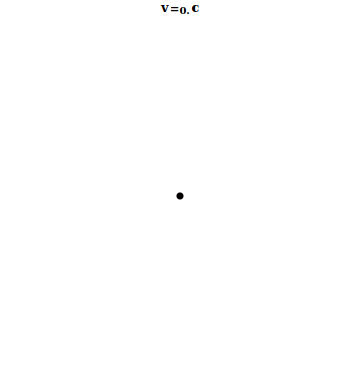2.2 Sound waves
Sound waves are another type of wave motion that you’re probably aware of already. Of course, you cannot actually see these waves. They are still quantified by their wavelength, frequency and amplitude, much like the waves in the last section.
With a sound wave in air, it’s the density of air that’s changing, going through cycles of compression and expansion. Sound waves in air travel at a speed of about 343 metres per second. Light travels almost a million times faster, hence the rule of thumb for measuring your distance from a lightning strike: you see the flash almost instantly, while it takes about three seconds per kilometre for the sound of thunder to reach you.
When a plane travels faster than the speed of sound, its sound waves form a cone behind it, like the water waves produced by the swimming ducks. The compression at the edge of this cone generates sound energy, which sounds to an observer like an explosion or thunderclap. This is known as a sonic boom.
Wavelengths of audible sounds vary from centimetres (high-pitched notes, high frequency) to several metres (low-pitched sound, low frequency). The audible frequency range for humans is typically from about 20 to 20,000 oscillations per second.
For sound waves, the amplitude measures the change in density. This is perceived as the loudness of the sound. The larger the amplitude of the sound wave, the louder the sound is perceived.

